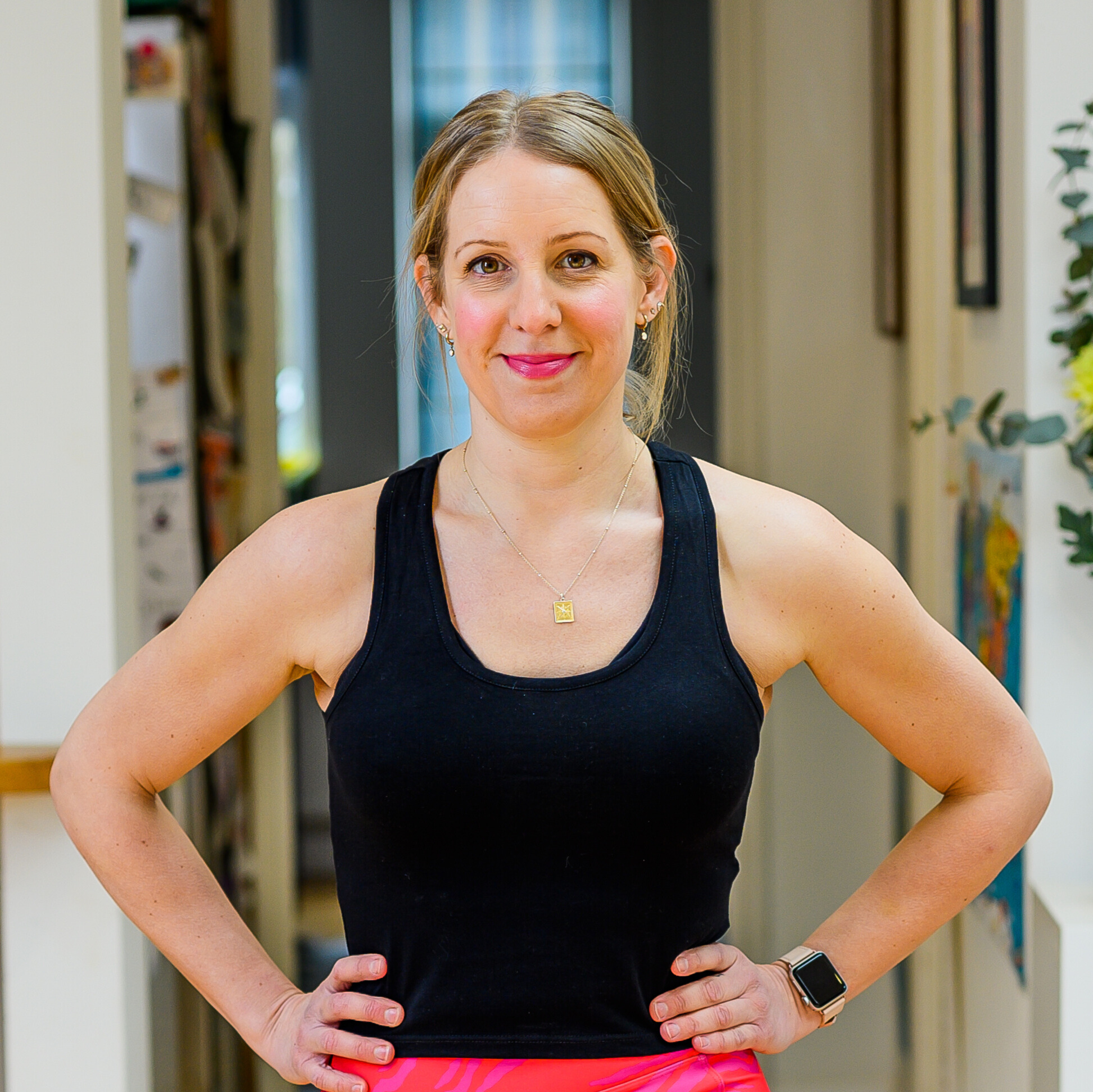Workouts for women over 50
Looking for workouts for women over 50? This no-jumping, low-impact bodyweight workout will keep you mobile and strong

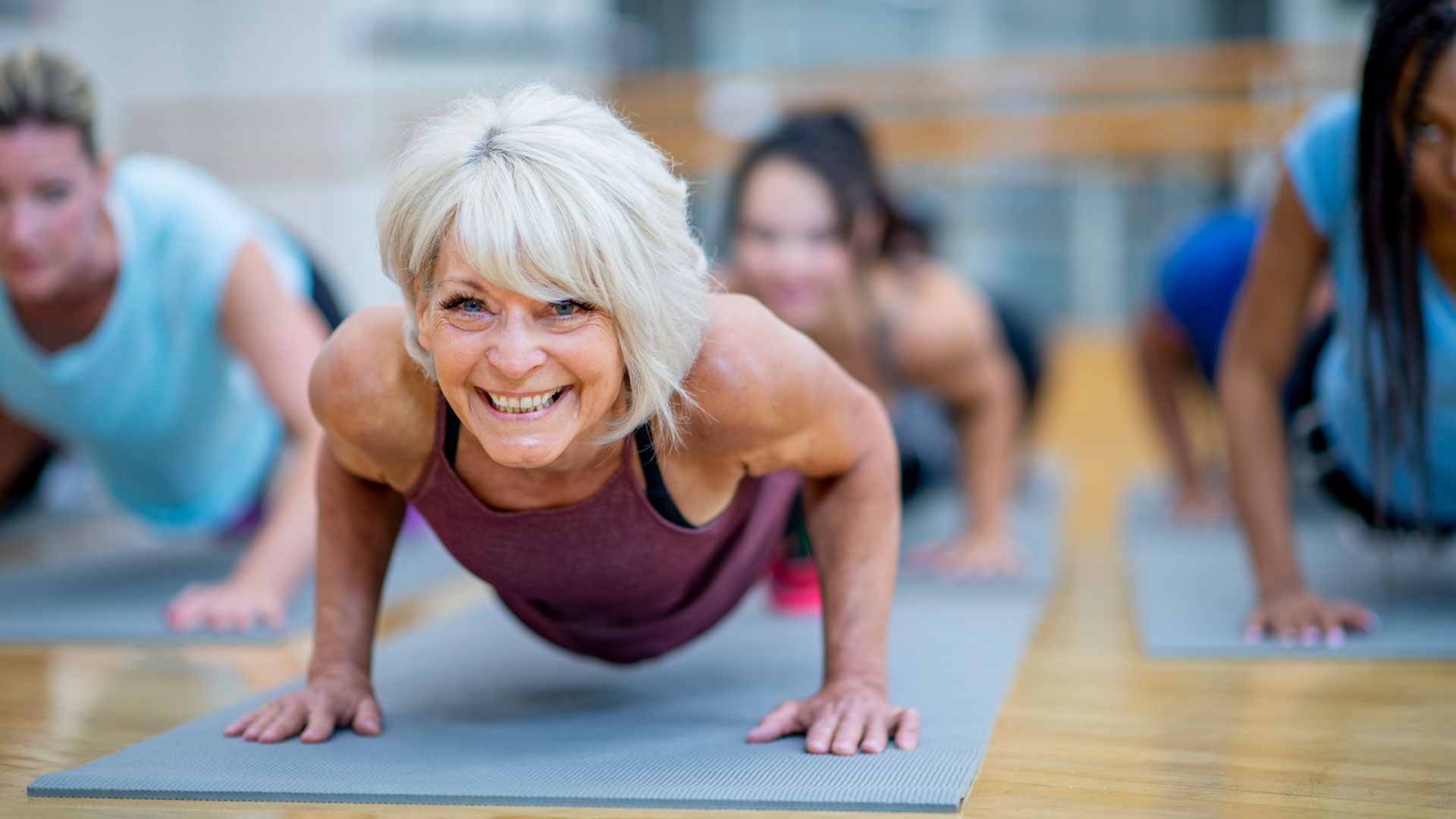
Workouts for women over 50 are a great way to stay flexible, strong, and healthy. As we get older, our bones naturally get weaker and more brittle, but exercise boosts bone density, reducing the risk of osteoporosis. Taking the best vitamins for women over 50 also helps overall health.
Physical activity is nature’s antidepressant, it regulates weight and improves cognitive function (thinking, learning, and judgment) as we age, according to the Centers for Disease Control and Prevention.
Read on to find out more about the benefits of exercise over 50, and to try our no-jumping, full-body workout.
Workouts for women over 50: what you need to know
Let’s be honest, a 50-year-old body isn’t going to be as flexible as a 20-year-old one but working out is the key to an independent life. We lose muscle as we age but exercise can help us rebuild it. Muscles burn more calories than fat, which means a workout can offset a slowing metabolism.
Training can also prevent the risk of serious illnesses including heart disease, stroke, Alzheimer’s, arthritis, and osteoporosis. It’s a fantastic mood booster and helps keep the brain sharp, too.
Lower impact physical activity is kinder to joints as we age, and is credited for reducing menopause symptoms. Regular exercise can help with menopausal weight gain, as well as improving balance, flexibility, and overall mobility. That means less risk of injuries or falls, and a more active life.
Here’s a workout for women over 50 to try out.
Start your week with achievable workout ideas, health tips and wellbeing advice in your inbox.
No jumping, full-body workout for women over 50
Workouts for women over 50: warm-up
Warm-ups help prepare the body for aerobic activity, gradually revving up your cardiovascular system by raising body temperature and increasing blood flow to the muscles that will be working hard during exercise. Warming up also helps reduce muscle soreness – aka Delayed Onset Muscle Soreness (DOMS) - and the risk of injury.
- 10 shoulder rolls
- 10 ‘no-jumping’ star steps
- 10 toe touches
- 10 heel kicks
- 10 high knees
- 10 squats with arm rolls
- 10 hip circles
- 10 lunges with torso twists
Main workout
For each exercise, complete 10 repetitions with slow and controlled technique and 2:2 tempo.
Lunges
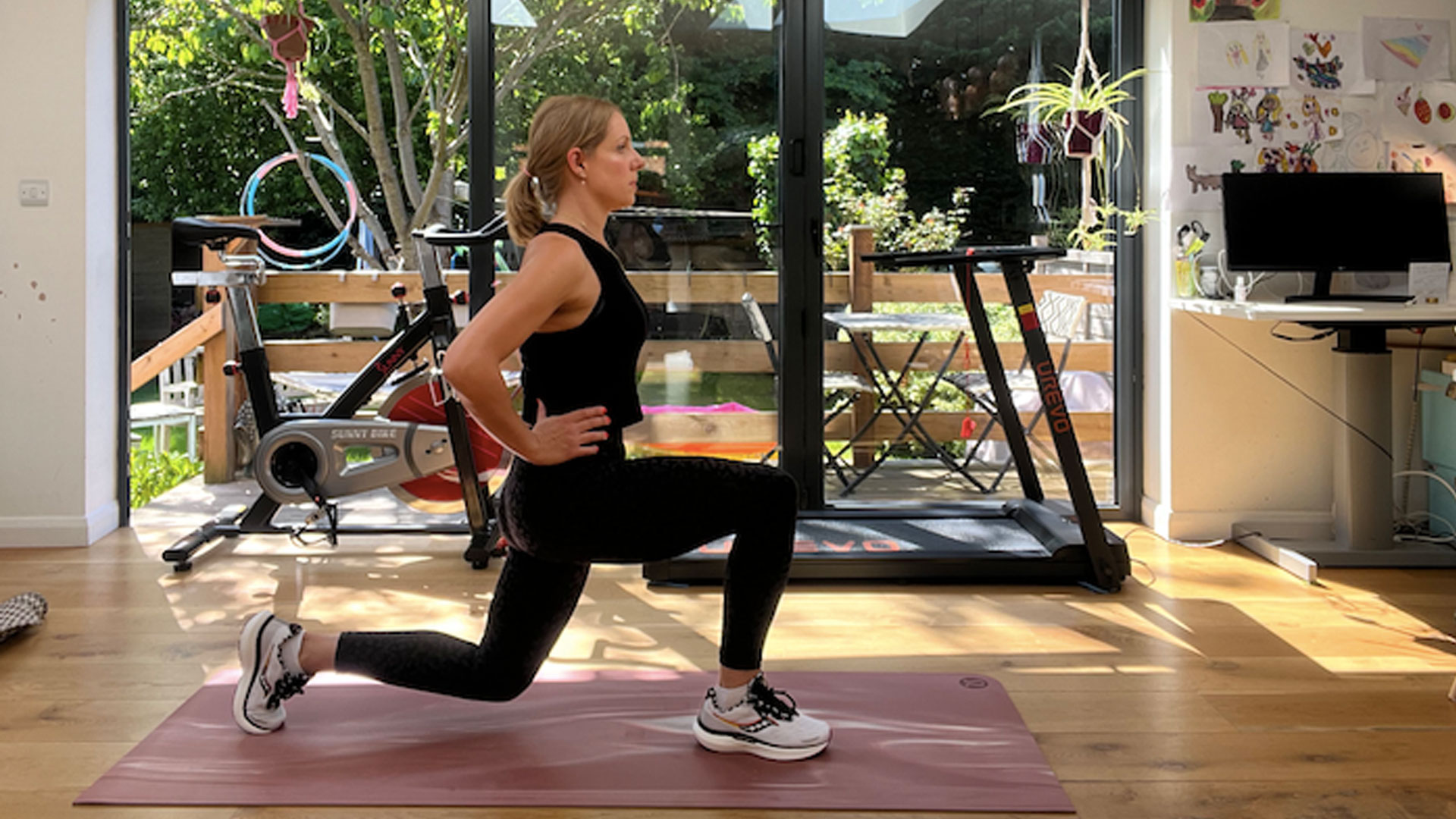
These are some of the best leg exercises for women over 50 because they target a wide range of muscles, especially the hard-to-reach area of the inner thigh.
- Start with feet hip-width apart.
- Take a big step forward with the right leg.
- Bend the right knee and lower the left leg towards the floor, until both knees are bent at a 90-degree angle.
- Hold for a second then return to the starting position.
- Repeat on the other side. Do five reps on each leg.
Squats

Squats strengthen the tendons, bones, and ligaments around the leg muscles, as well as make the knees more stable. They can even boost bone mineral density, which is important, as our bones naturally get weaker with age.
- Stand with feet shoulder-width apart.
- Bend at the knees and hips, sticking your bottom back as if you’re sitting down on a chair. Keep your chest to the sky to protect your spine from rounding.
- Lower your hips so your knees are stacked over your ankles. Keep your weight in your heels and use your glutes (butt) to explode back up to start position. Aim for 10 reps.
Curtsy lunges
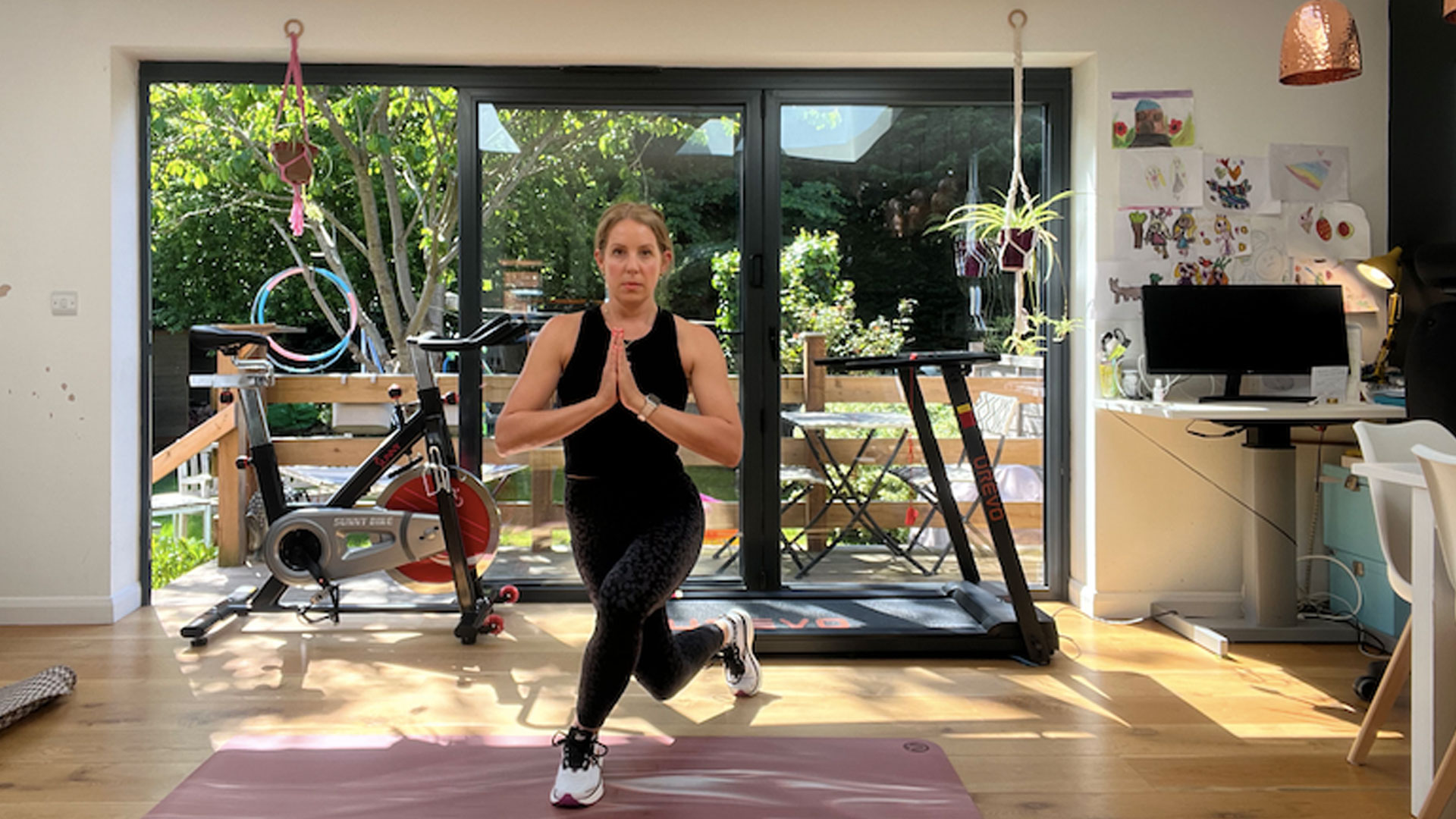
This is a great exercise for toning the inner thighs as well as the butt.
- Stand with feet hip-width apart.
- Take a big step back with the right leg into a reverse lunge. Then cross the right leg behind your left and back to the reverse lunge position.
- Return foot to the start position and swap legs. Repeat five times on each leg.
Sumo squats

Compound (multiple muscle groups) movements like the sumo squat are a great way to strengthen the lower body.
- These are like normal squats but with a much wider stance. Stand with feet out wide and toes pointing out.
- With weight in your heels, lower your hips and bend knees as if sitting down.
- Lower until thighs are parallel to the floor, then squeeze your butt (glutes) to power back up. Repeat for 10 reps.
Push-ups

Push-ups work more than just the arms. They also do wonders for the shoulders (deltoids), chest (pectoralis major), core (rectus abdominis), hips (obliques), and leg muscles (quadriceps).
- Starting on the knees or your toes, place your hands on the ground slightly in front of the shoulders. Your upper body should be at a 45-degree angle.
- Slowly lower the chest towards the floor, pause, then push back up to the start position. That’s one rep.
Tricep dips

This exercise strengthens the upper body and increases range of motion (how far you can move or stretch a part of your body).
- Sit on a chair with your hands next to your hips.
- Lift up onto your hands and bring your hips slightly forward.
- Bend your elbows as you lower your hips down, keeping shoulders down and hips close to the chair.
- Push back up to start position and repeat 10 times.
Toe taps
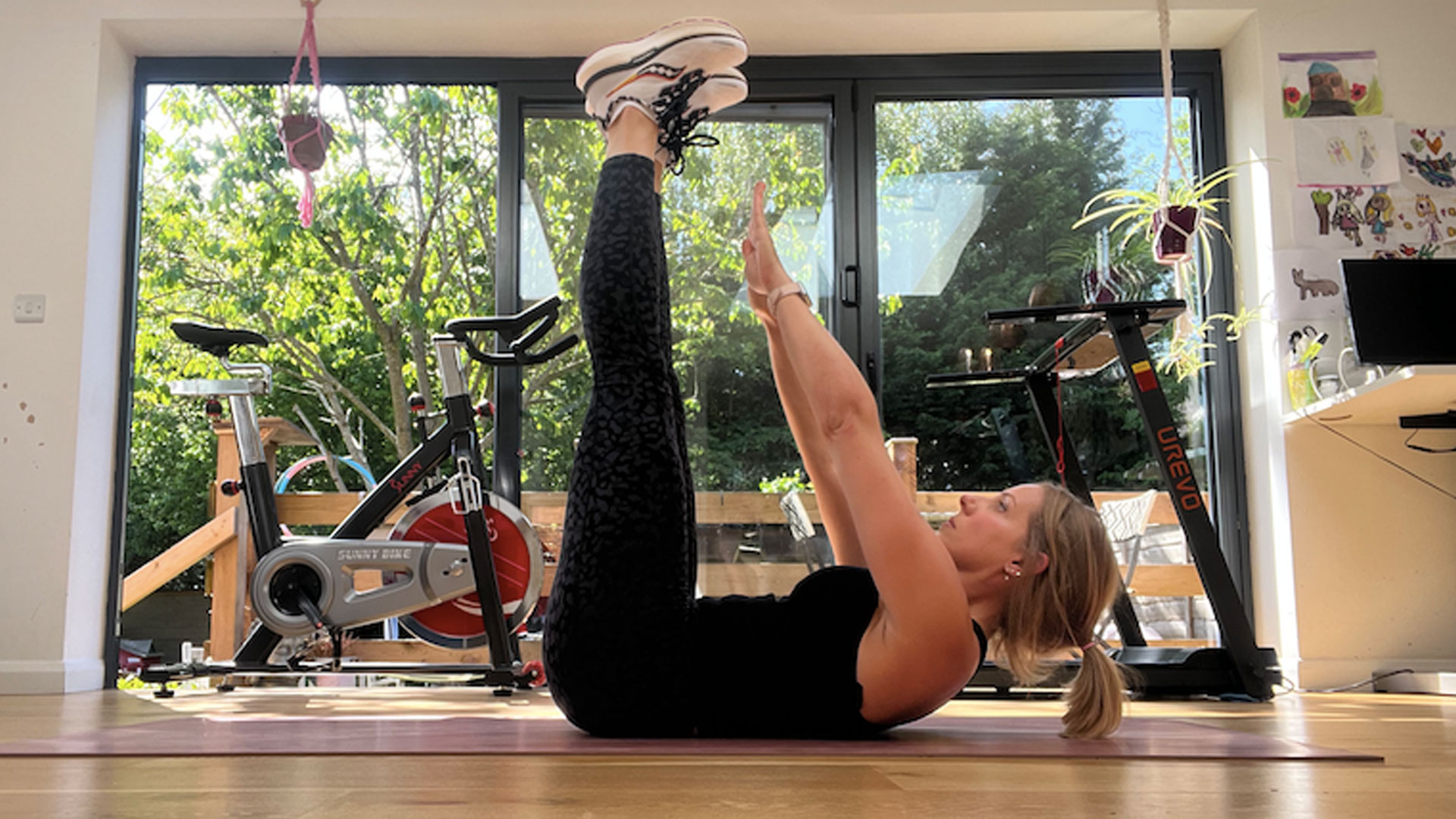
Toe taps are a good core move for older people, even those with back pain, as they don’t put any pressure on the lumbar spine (lower back) as crunches do.
- Start by lying on your back with palms by your side.
- Raise your legs up with feet pointing to the sky until they are 90-degrees.
- With your lower back on the ground, exhale as you reach with both hands towards your toes.
- Inhale as your lower back down to start position. That’s one rep. Repeat 10 times.
Leg raises

As well as working the lower abs, the leg raise is great for improving the strength and flexibility of the hips and lower back.
- Lie on the floor with your arms by your sides.
- Raise your legs – either together, or, for an easier option, one at a time – until your feet are pointed to the ceiling.
- Slowly, and with control, lower them back down, until they are just above the floor. That’s one rep. Repeat 10 times. If you struggle to reach 10 raises, start with five and slowly build up to more.
Cool down
The cool down is just as important as warming up - it gradually brings the heart rate down and the body back to a normal or ‘steady’ state (known as homeostasis), returning muscles to their resting length, reducing tension, and encouraging relaxation.
Standing quad stretch
- From standing position, bend one knee, grasp the right foot and pull the heel into the buttock area so that you feel the stretch in the front of your thighs (quadriceps).
- Slightly bend the supporting leg so the knees are together but not touching.
- Hold for 20-30 seconds and swap legs.
Kneeling hip flexor stretch
Short or tight hip flexor muscles can contribute to lower back pain so it’s extra important to stretch these muscles to maintain a healthy posture.
- Kneel on a mat with both knees, then place one foot forward so you have a 90-degree angle at the hip and knee.
- Keeping the torso upright, lean forward until you feel a stretch through the groin and top of the thigh.
- Hold for 20-30 seconds then move back to the start position and swap legs. Hold the stretch on the other leg for 20-30 seconds.
Seated shoulder stretch
- With legs crossed, on your knees or seated in a chair, raise one arm to shoulder height and reach it across your chest.
- Pull the arm slightly toward you with the other arm.
- Hold for 20-30 seconds then swap arms.
Seated triceps stretch
- Extend one arm vertically and bend your elbow taking the hand down the back of your head, placing your arm along the line of your spine.
- Keeping your back straight, take the other hand across the front of your face and place it on the back of your elbow/arm.
- Gradually apply pressure to increase the stretch on your tricep.
- Hold for 20-30 seconds then swap arms.
Lying glute stretch
- Lie on your back with feet on the floor and knees up.
- Bring one leg up and put your ankle on the opposite knee.
- Reach through the ‘triangle’ hole and pull your thigh towards your body. The stretch will be felt strongly in the butt area. If the leg starts shaking, release or ease off the stretch slightly.
- Hold for 20-30 seconds.
Lying lower back stretch
- Lying on your back, bend your knees.
- Lift your knees towards the chest until the stretch is felt in the lower back.
- Hold for 20-30 seconds.
Kneeling lat stretch/child’s pose
- Roll over and sit on your knees.
- Raise your arms above your head then slowly lower your body down to the floor, with your palms down on the floor.
- Take a deep breath and as you breathe out, walk your fingers a little further away from you on the floor. You should feel this stretch in your back (lats).
- Hold for 20-30 seconds then slowly return to standing.
If you enjoyed this, take a look at weight training for women over 50 or find out about practicing yoga over 50.
Maddy Biddulph is a journalist specializing in fitness, health and wellbeing content, with 26 years in consumer media working as a writer and editor for some of the bestselling newspapers, magazines and websites in the US and UK, including Marie Claire, The Sunday Times and Women’s Health UK.
She is a CIMPSA-certified PT and works one-on-one with clients, as well as running Circuits Club classes which mixes cardio and strength training and chair-based exercise classes for seniors.
